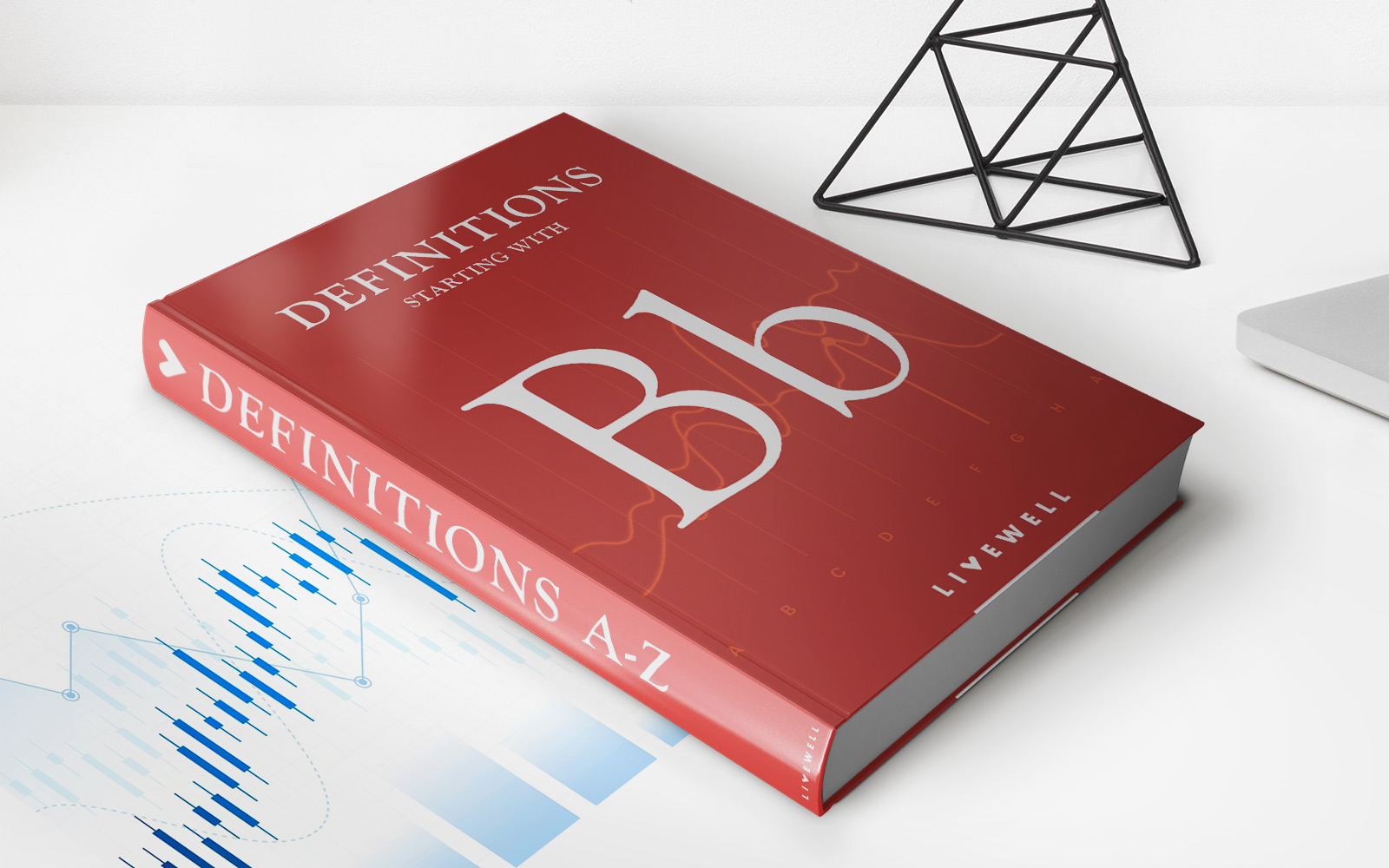

Finance
How To Invest In Bank-Owned Life Insurance
Published: October 14, 2023
Learn how to invest in bank-owned life insurance and secure your financial future. Discover the benefits and strategies of this lucrative finance opportunity.
(Many of the links in this article redirect to a specific reviewed product. Your purchase of these products through affiliate links helps to generate commission for LiveWell, at no extra cost. Learn more)
Table of Contents
- Introduction
- What is Bank-Owned Life Insurance (BOLI)?
- Benefits of Investing in Bank-Owned Life Insurance
- Risks and Considerations of Bank-Owned Life Insurance
- Choosing the Right BOLI Investment Strategy
- Steps to Invest in Bank-Owned Life Insurance
- Tax Implications of Bank-Owned Life Insurance Investments
- Case Studies: Successful Bank-Owned Life Insurance Investments
- Conclusion
Introduction
Welcome to the world of bank-owned life insurance (BOLI), where savvy investors have found an innovative way to grow their wealth. BOLI is a unique investment strategy that offers a range of benefits and opportunities for those looking to diversify their portfolio and maximize their returns.
So, what exactly is bank-owned life insurance? Simply put, it is a type of life insurance policy that is purchased by banks or financial institutions on the lives of their employees. As the policyholder, the bank pays the premiums and eventually receives the death benefit when the insured individual passes away.
While bank-owned life insurance may seem unconventional at first glance, it has gained popularity among investors due to its unique characteristics and attractive investment potential. In this article, we will explore the benefits of investing in BOLI, the risks and considerations involved, and provide key insights on how to successfully invest in this asset class.
Bank-owned life insurance offers several compelling advantages for investors. Firstly, it provides a stable and predictable rate of return, ensuring consistent growth over time. Unlike traditional investments that are subject to market volatility, BOLI allows investors to take advantage of a stable income stream.
Additionally, BOLI offers tax advantages that can significantly enhance investment returns. The cash value growth within the policy is tax-deferred, meaning investors can accumulate wealth without incurring immediate tax liabilities. This tax advantage can be particularly appealing for high net worth individuals looking to optimize their portfolio and reduce their tax burden.
Furthermore, BOLI investments can serve as a hedge against economic downturns. In times of financial instability, the insurance component of BOLI provides a safety net, ensuring that investors have a cushion to fall back on.
However, it is important to note that investing in bank-owned life insurance also comes with risks and considerations. Policy performance may vary depending on the financial stability of the policy issuer, so conducting thorough due diligence is vital. Additionally, liquidity can be a potential challenge, as BOLI investments generally have a long-term investment horizon.
Next, we will delve into the key factors to consider when choosing the right BOLI investment strategy, followed by a step-by-step guide on how to invest in bank-owned life insurance. We will also discuss the tax implications of BOLI investments, and provide real-life case studies of successful BOLI investments to illustrate the potential returns.
Without further ado, let’s embark on this journey and discover the opportunities that bank-owned life insurance can offer in the world of finance and investing.
What is Bank-Owned Life Insurance (BOLI)?
Bank-Owned Life Insurance, commonly known as BOLI, is a specialized type of life insurance policy that is purchased and owned by banks or financial institutions on the lives of their employees. It is a strategic asset utilized by institutions to enhance their financial position and provide additional benefits to key employees.
The basic structure of BOLI involves the bank acting as the policyholder, paying premiums on the policies, and eventually receiving the death benefit when the insured person passes away. These policies are typically acquired on the lives of high-ranking executives or key employees, but they can also be extended to a broader group of employees.
There are two primary types of BOLI policies: traditional BOLI and COLI (Corporate-Owned Life Insurance). Traditional BOLI policies are designed to provide a death benefit to the bank and are structured as general assets of the institution. COLI policies, on the other hand, are designed specifically to finance employee benefit obligations such as retiree health and welfare benefits.
One key feature of BOLI is that it accumulates cash value over time. The cash value growth represents the difference between the premiums paid by the bank and the cost of insurance, administrative fees, and other expenses. The cash value generally grows tax-deferred, meaning that taxes on the growth are deferred until the policy is surrendered or a death benefit is paid out.
BOLI policies are typically held for the long term, allowing the cash value to accumulate and providing the bank with a stable and predictable source of income. The policies can be structured in various ways to suit the institution’s needs, including providing key person protection, funding employee benefit plans, or simply as an investment asset on the bank’s balance sheet.
Participating BOLI policies offer additional benefits beyond the death benefit. These policies may provide the policyholder with access to dividends, which can be used to offset policy premiums or provide an additional income stream. The dividend rates are determined by the performance of the insurance company and the underlying investment portfolio.
BOLI has gained popularity among banks and financial institutions for several reasons. Firstly, it helps institutions offset the costs of employee benefit plans by utilizing the cash value growth. Additionally, BOLI can enhance the institution’s financial position by providing a source of tax-deferred income. Lastly, BOLI serves as a retention tool, allowing banks to offer additional benefits to key employees, which can help attract and retain top talent.
While BOLI is a unique investment strategy with various benefits, it is important to carefully evaluate the terms and conditions of the policy and conduct proper due diligence before investing. Understanding the features, risks, and potential returns of BOLI is crucial to maximizing the benefits and mitigating any potential pitfalls.
Now that we have a better understanding of what BOLI entails, let’s explore the advantages and considerations of investing in bank-owned life insurance.
Benefits of Investing in Bank-Owned Life Insurance
Investing in bank-owned life insurance (BOLI) can offer a range of benefits for investors looking to diversify their portfolios and maximize their returns. Let’s take a closer look at some of the advantages of investing in BOLI:
- Stable and predictable returns: One of the key benefits of BOLI is the stability and predictability it offers in terms of investment returns. Unlike traditional investments, such as stocks or bonds, BOLI provides a consistent income stream over time. This stability can be particularly appealing for risk-averse investors who seek a reliable source of income.
- Tax advantages: BOLI offers several tax advantages that can significantly enhance investment returns. The cash value growth within the policy is tax-deferred, meaning that investors can accumulate wealth without immediately incurring tax liabilities. This tax-advantaged growth can be particularly beneficial for high-net-worth individuals looking to optimize their portfolios and minimize their tax burden.
- Hedge against economic downturns: BOLI can serve as a hedge against economic downturns and market volatility. In times of financial instability, the insurance component of BOLI provides a safety net, ensuring that investors have a cushion to fall back on. This can offer peace of mind and help protect investment portfolios during challenging economic times.
- Additional benefits for policyholders: BOLI policies can offer additional benefits beyond the death benefit. For example, participating policies provide the policyholder with access to dividends. These dividends can be used to offset policy premiums or provide an additional income stream. The rates of dividends are determined by the performance of the insurance company and the underlying investment portfolio.
- Retention tool for banks and financial institutions: BOLI can be utilized by banks and financial institutions as a retention tool. By offering key employees additional benefits through BOLI, institutions can attract and retain top talent. This can enhance the stability and success of the institution by retaining experienced and valuable employees.
It is important to note that while investing in BOLI offers numerous advantages, there are also risks and considerations to be aware of. The performance of BOLI policies may vary depending on the financial stability of the policy issuer, so conducting thorough due diligence is crucial. Additionally, liquidity can be a potential challenge, as BOLI investments typically have a long-term investment horizon.
Now that we have explored the benefits of investing in BOLI, let’s discuss the risks and considerations to help you make informed investment decisions.
Risks and Considerations of Bank-Owned Life Insurance
While investing in bank-owned life insurance (BOLI) can offer several benefits, it is important to carefully consider the risks and potential drawbacks associated with this investment strategy. Here are some key risks and considerations to keep in mind:
- Fiscal health of the policy issuer: The financial stability and creditworthiness of the insurance company issuing the BOLI policies are critical considerations. The performance of BOLI policies may be directly linked to the issuer’s ability to fulfill its obligations. It is crucial to conduct a thorough evaluation of the insurer’s financial strength and track record before investing in BOLI.
- Long-term nature and illiquidity: BOLI investments typically have a long-term investment horizon, and investors should be prepared for a potentially extended holding period. Unlike publicly traded investments, it may not be easy to sell or liquidate BOLI policies quickly. Therefore, investors should carefully consider their liquidity needs and have a clear understanding of the investment time frame.
- Interest rate and market risks: BOLI policies are affected by interest rate fluctuations and market volatility. Changes in interest rates can impact the performance of the underlying investment portfolio and policy returns. Additionally, economic downturns or unfavorable market conditions can affect the ability of the insurer to generate favorable returns, potentially impacting the cash value growth and overall investment performance.
- Policyholder changes: BOLI policies are tied to the bank or financial institution that owns them. If there are changes in the ownership or control of the institution, it could impact the policy and potentially lead to alterations in the terms or benefits. Investors should be aware of any potential changes in the controlling ownership and understand the implications for their BOLI investments.
- Regulatory and tax changes: BOLI investments are subject to regulatory changes and tax laws. Changes in regulations or tax codes can impact the tax advantages associated with BOLI or the ability to realize the full benefits of the investment. Staying informed and working closely with tax and legal professionals is essential to navigate any potential regulatory or tax changes.
It is crucial to thoroughly evaluate the risks and consider your investment objectives, risk tolerance, and financial situation before investing in BOLI. Conducting proper due diligence, consulting with financial advisors, and understanding the terms and conditions of the policy are all important steps to mitigate potential risks and make informed investment decisions.
Now that we have explored the risks and considerations associated with BOLI, let’s move on to discussing how to choose the right BOLI investment strategy.
Choosing the Right BOLI Investment Strategy
When it comes to investing in bank-owned life insurance (BOLI), choosing the right investment strategy is crucial for maximizing returns and minimizing risks. Here are some key factors to consider when selecting a BOLI investment strategy:
- Financial goals and risk tolerance: Define your financial goals and assess your risk tolerance. Determine whether your investment objective is long-term growth, income generation, or a combination of both. Understand your comfort level with market volatility and potential fluctuations in policy returns. This will help guide your decision-making process and ensure that the selected strategy aligns with your objectives and risk profile.
- Policy type and structure: Understand the different types of BOLI policies available and the associated benefits and risks. Evaluate whether you prefer traditional BOLI policies, which offer a death benefit to the bank, or COLI policies, which are designed to finance employee benefit obligations. Consider the policy structure, such as participating or non-participating policies, to determine which best suits your investment goals and preferences.
- Insurance company selection: Research and evaluate insurance companies that offer BOLI policies. Consider factors such as financial stability, reputation, track record, and customer service. Look for insurance companies with strong ratings from independent rating agencies and a history of honoring policyholder benefits. A reliable insurer provides confidence in the long-term performance and stability of your BOLI investment.
- Investment options: Understand the investment options available within the BOLI policy. Evaluate the underlying investment portfolios and assess their historical performance, risk profile, and alignment with your investment objectives. Consider the asset classes included in the portfolio, such as bonds, equities, or alternative investments, and assess their potential for generating consistent returns over the long term.
- Policy expenses and fees: Review the expenses and fees associated with the BOLI policy. Understand the cost structure, which may include insurance costs, administrative fees, and other charges. Evaluate the impact of these expenses on your overall investment returns. Compare the expenses across different policies and insurers to choose a BOLI investment strategy that offers a competitive cost structure.
- Professional guidance: Consider working with a financial advisor experienced in BOLI investments. A knowledgeable advisor can provide valuable insights, help you navigate the complexities of BOLI, and assist in selecting the right investment strategy based on your unique financial circumstances and goals. Their expertise can ensure that your BOLI investment aligns with your overall financial plan and maximizes your potential returns.
By carefully considering these factors and conducting thorough research, you can select a BOLI investment strategy that aligns with your financial goals, risk tolerance, and preferences. Regularly review and reassess your strategy to adapt to changing market conditions or personal circumstances.
Now that we’ve discussed how to choose the right BOLI investment strategy, let’s move on to the practical steps involved in investing in bank-owned life insurance.
Steps to Invest in Bank-Owned Life Insurance
Investing in bank-owned life insurance (BOLI) requires careful consideration and a step-by-step approach. Here are the key steps involved in investing in BOLI:
- Educate yourself: Start by familiarizing yourself with the concept of BOLI and understanding its benefits, risks, and potential returns. Research different types of BOLI policies, investment options, and insurance companies that offer BOLI products. This knowledge will empower you to make informed investment decisions.
- Assess your financial goals: Determine your investment objectives and risk tolerance. Consider factors such as your desired rate of return, investment time frame, and liquidity needs. This will help you identify the type of BOLI policy and investment strategy that aligns with your financial goals.
- Select a reputable insurance company: Carefully choose an insurance company that offers BOLI policies. Look for companies with a strong financial track record, high-quality ratings from independent rating agencies, and a history of honoring policyholder benefits. Conduct thorough due diligence and research the insurer’s credibility and stability.
- Consult with a financial advisor: Seek guidance from a qualified financial advisor who specializes in BOLI investments. They can help you navigate the complexities of BOLI, evaluate different policy options, and select the investment strategy that best suits your needs. Their expertise will ensure that your BOLI investment aligns with your overall financial plan.
- Review policy terms and features: Analyze the terms and features of the BOLI policy. Understand factors such as premium payments, death benefits, cash value growth potential, and participating or non-participating status. Evaluate the investment options, underlying portfolios, and fees associated with the policy. Ensure that the policy aligns with your investment goals and preferences.
- Complete the application process: Once you have selected a policy, submit the necessary application forms and provide any required personal and financial information. Be prepared to undergo underwriting, which may include medical examinations or other assessments depending on the policy. Cooperate with the insurance company throughout the application process.
- Monitor your investment: Regularly review your BOLI investment to track its performance and assess whether it aligns with your financial goals. Stay informed about any changes in the insurance company’s financial status or policy terms. Consult with your financial advisor periodically to discuss updates, potential adjustments, or future investment opportunities.
By following these steps and working closely with a financial advisor, you can navigate the process of investing in BOLI and make informed decisions that align with your financial objectives and risk tolerance.
Now that we’ve covered the steps to invest in BOLI, let’s examine the tax implications of bank-owned life insurance investments.
Tax Implications of Bank-Owned Life Insurance Investments
Bank-owned life insurance (BOLI) investments offer several tax advantages that can enhance investment returns and provide potential tax savings. Understanding the tax implications is crucial when considering BOLI as part of your investment strategy. Here are the key tax considerations:
- Tax-deferred growth: One of the primary tax advantages of BOLI is the ability to accumulate cash value on a tax-deferred basis. The growth in the cash value of the policy is not subject to immediate taxes, allowing your investment to compound over time without incurring current tax liabilities. This tax deferral can significantly enhance the overall return on your investment.
- Death benefit tax treatment: The death benefit paid out to the bank upon the insured’s passing is usually income tax-free. This means that the proceeds from the policy are not subject to personal income taxes. However, there may be exceptions and limitations depending on the specific circumstances and the policy structure. Consult with a tax professional to fully understand the tax implications of the death benefit in your jurisdiction.
- Policy withdrawals and loans: In some cases, policyholders may seek to access the cash value of their BOLI policy through withdrawals or loans. Withdrawals from the policy are generally subject to income taxes on the portion that exceeds the premiums paid. Policy loans, on the other hand, are generally tax-free, as they are considered loans against the policy’s cash value and not withdrawals. However, loans should be paid back to avoid potential tax consequences.
- Estate planning considerations: BOLI can also be utilized as part of an effective estate planning strategy. The death benefit paid out by the policy upon the insured’s passing can help cover estate taxes or provide liquidity to the estate. Careful estate planning is essential to ensure that BOLI policies are structured and owned in a manner that aligns with your estate planning objectives and minimizes potential estate tax liabilities.
- Tax law changes: It is important to stay informed about any changes in tax laws that may impact the tax treatment of BOLI investments. Tax laws can change over time, potentially affecting the tax advantages associated with BOLI or introducing new regulations. Regularly consult with a tax professional to stay up to date and ensure compliance with any applicable tax regulations or reporting requirements.
Tax considerations play a significant role when evaluating the overall benefits of BOLI investments. Consult with a tax advisor or financial professional who specializes in BOLI to understand the specific tax implications in your jurisdiction and how they align with your investment goals and tax strategy.
Now that we’ve examined the tax implications of BOLI, let’s explore real-life case studies of successful bank-owned life insurance investments.
Case Studies: Successful Bank-Owned Life Insurance Investments
To illustrate the potential benefits and returns of bank-owned life insurance (BOLI) investments, let’s explore a few real-life case studies of successful BOLI investments:
Case Study 1: Community Bank’s Employee Benefit Enhancement
A community bank with a goal of enhancing employee benefits and retaining key employees decided to invest in BOLI. The bank purchased BOLI policies on the lives of its top executives and selected a participating policy structure. Over time, the cash value of the policies grew tax-deferred and generated returns. The bank used the dividends from the policies to offset the cost of employee benefits, such as healthcare plans and retirement benefits. The BOLI investment not only helped attract and retain valuable employees but also provided a reliable income stream to support employee benefit obligations.
Case Study 2: Nonprofit Organization’s Financial Stability
A nonprofit organization sought to strengthen its financial stability and fund future initiatives. The organization purchased BOLI policies on the lives of key executives, with the death benefit designated to the organization. The cash value growth within the policies provided a stable source of tax-deferred income for the organization. The death benefits served as a safety net, offering financial protection and liquidity to support ongoing operations and fund future projects. The BOLI investment helped the organization navigate economic downturns and provided a foundation for future growth and development.
Case Study 3: Bank’s Portfolio Diversification and Tax Efficiency
A large bank aimed to diversify its investment portfolio and optimize its tax efficiency. The bank invested in BOLI policies as part of its overall investment strategy. By selecting a variety of policy types and participating in policies, the bank diversified its holdings and minimized risk exposure. The tax-deferred growth of the cash value within the policies allowed the bank to accumulate wealth without incurring immediate tax liabilities. The BOLI investment served as a tax-efficient asset, helping the bank enhance its overall portfolio returns and reduce its tax burden.
These case studies demonstrate some of the ways in which BOLI investments can benefit organizations and individuals. From enhancing employee benefits to providing financial stability and portfolio diversification, BOLI offers a unique investment opportunity with potential for favorable returns and tax advantages.
It is important to note that these case studies are examples and results may vary depending on individual circumstances, policy terms, and market conditions. It is recommended to consult with a financial advisor to evaluate the suitability of BOLI investments for your specific needs and goals.
Now that we have explored case studies, let’s conclude our discussion on bank-owned life insurance.
Conclusion
Bank-owned life insurance (BOLI) offers a unique investment opportunity for individuals and organizations looking to diversify their portfolios and optimize their returns. With its stable and predictable income stream, tax advantages, and potential for growth, BOLI has gained popularity among investors seeking a reliable source of long-term investment growth.
Investing in BOLI provides numerous benefits, including stable returns, tax-deferred growth, and the potential to hedge against economic downturns. BOLI can also be utilized as a retention tool for organizations, attracting and retaining top talent through enhanced employee benefits.
However, it is important to be aware of the risks and considerations associated with BOLI investments. Factors such as the financial health of the insurance company, illiquidity, interest rate and market risks, and potential policyholder changes should be carefully evaluated. Conducting thorough due diligence and seeking professional advice can help mitigate these risks and ensure informed investment decisions.
When selecting a BOLI investment strategy, consider your financial goals, risk tolerance, and policy features. Assess the financial stability of the insurance company, evaluate investment options and expenses, and consult with a financial advisor experienced in BOLI investments.
Understanding the tax implications of BOLI investments is crucial. Taking advantage of tax-deferred growth, tax-free death benefits, and tax-efficient policy withdrawals or loans can enhance the overall return on your investment. Stay informed about any tax law changes that may impact the tax advantages associated with BOLI.
Real-life case studies highlight the benefits and potential outcomes of successful BOLI investments. From enhancing employee benefits and ensuring financial stability to portfolio diversification and tax efficiency, BOLI offers a range of advantages for investors.
In conclusion, bank-owned life insurance provides a unique investment opportunity with potential for stable returns, tax advantages, and strategic benefits for organizations. By carefully considering the risks, selecting the right investment strategy, and staying informed about tax implications, investors can maximize the potential of BOLI as part of their financial and investment portfolio.
Now that you have a comprehensive understanding of bank-owned life insurance, you are ready to explore the opportunities and consider whether BOLI is the right investment strategy for you.














